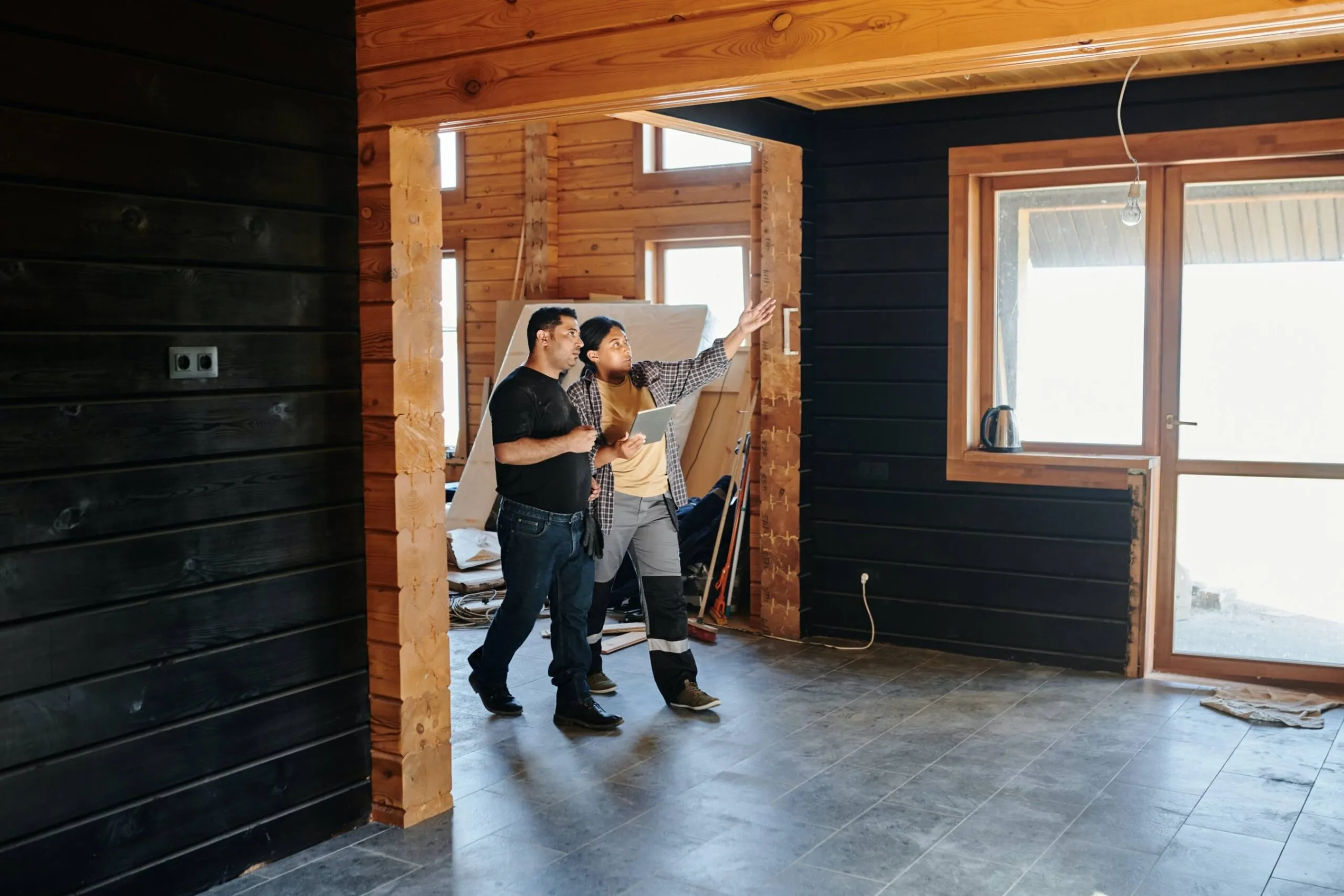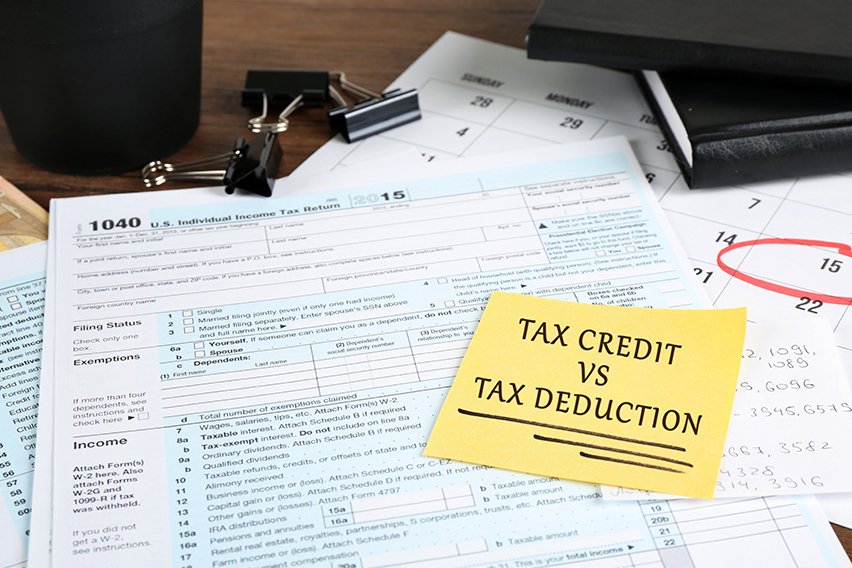Home Accessibility Tax Credit (HATC): How to Claim

Life with a disability can come with many expenses that others won’t have to deal with. Give yourself a break this year by taking advantage of the CRA’s Home Accessibility Tax Credit, or HATC, a nonrefundable tax credit for home renovation or alteration intended to make a home more accessible. In this guide, we’ll cover everything you need to know about the HATC and how to claim it.
Key Takeaways
- The HATC is a nonrefundable tax credit that can be claimed for home accessibility expenses if you are a qualifying individual.
- Specific HATC criteria on eligible dwelling types, expenses, and renovations are in place.
- Generally, any alteration that improves functionality, mobility, accessibility, and safety in an eligible dwelling qualifies for the HATC.
- You can double or triple your credit for the same expense by claiming it for both HATC and as a medical expense.
- What Is the Home Accessibility Tax Credit?
- What Is the Home Accessibility Tax Credit Eligibility Criteria?
- Which Expenses Qualify for the Home Accessibility Tax Credit?
- Which Expenses Don’t Qualify for the Home Accessibility Tax Credit?
- How To Claim the HATC
- Get Double or Triple Credit
- Use Freshbooks To File Your Taxes Faster And Easier
- Frequently Asked Questions
What Is the Home Accessibility Tax Credit?
The HATC is a non-refundable tax credit offered by the CRA to offset the costs of renovating or otherwise altering an eligible dwelling in order to improve accessibility. Expenses are considered eligible if they’re needed to improve the mobility, functionality, and safety of a qualifying individual in their home. The HATC currently allows you to claim up to $10,000 in eligible expenses, and offers a tax credit equal to 15% of the expenditure, up to a maximum of $1,500 in tax credit per year.

What Is the Home Accessibility Tax Credit Eligibility Criteria?
There are a few requirements you’ll need to meet in order to qualify to claim the HATC. Firstly, you’ll need to be designated by the CRA as either a qualifying individual (either eligible for the Disability Tax Credit at any point in the year or 65 or older at the end of the year) or an eligible individual, such as the spouse or common-law partner of a qualifying individual. Other criteria are as follows:
- Qualifying Expenses: Expenses must be of an enduring, integral nature to the structure’s accessibility. Services can’t be provided by a relative unless registered to collect GST/HST.
- Qualifying Renovations: Renovations must be enduring and integral to the home, and must be intended to improve mobility, function, and/or safety in the home for a qualifying individual.
- Eligible Dwelling: The home itself must also be eligible for the HATC. It must be a housing unit located in Canada and the principal residence of the qualifying individual at all times in the tax year.
Which Expenses Qualify for the Home Accessibility Tax Credit?
There are a number of renovations and alterations you can use to qualify for the HATC. These qualifying expenses include, but aren’t limited to:
- Grab bars
- Handrails
- Wheel-in showers
- Walk-in bathtubs
- Widened doorways to allow wheelchair users to gain access
- Lowering of cabinets and other fixtures
If you hire a professional to do any kind of HATC-eligible alteration to a qualifying home, you can generally claim the entirety of the expense to get the HATC, as long as you get a work agreement in writing. If you make these changes yourself, you can count expenses like materials, building plans, permits, fixtures, and equipment rentals as HATC-eligible.
Which Expenses Don’t Qualify for the Home Accessibility Tax Credit?
There are a few accessibility-related expenses that do not qualify for the HATC. These include:
- Costs for purchasing a property that can be used by the qualifying individual without a qualifying renovation
- Recurring or routine maintenance and upkeep costs
- Household appliances
- Electronic home entertainment devices of any kind
- Costs for services like maintenance, housekeeping, or security
- Costs related to financing for your qualifying renovation
- Costs of any renovations made primarily to increase a home’s value
Making the most of tax credits like the HATC doesn’t have to be a complex process. FreshBooks helps take the pain out of tax preparation with its simple, yet powerful accounting software.
How To Claim the HATC
The HATC is claimed on line 31285 of your federal tax return. But first, you’ll need to complete your province’s specific schedule 12 form, Home Accessibility Expenses. On this form, you’ll enter the work dates, expense types, and names and GST/HST numbers of any contractors or other professionals you hired for the qualifying renovation. If you did the work yourself, you’ll instead enter your supply expenses.
Once this is done, simply attach your schedule 12 to your regular tax return and file as normal. You don’t need to send the receipts with your form, but you should definitely retain them in case the CRA requests support for your HATC claim.
Get Double or Triple Credit
Because many qualifying accessibility renovations also qualify as medical expenses, you can quite easily claim double credit on any eligible expenses. As a qualifying individual, you’re allowed to claim the same expenses for both the HATC and as eligible medical expenses tax deduction (if it qualifies for both). Furthermore, some provinces like British Columbia and New Brunswick offer an additional provincial credit, meaning you can potentially claim three times the credit on one expense. Here’s an example of how this works:
A senior citizen in New Brunswick pays to install grab bars, handrails, and a wheel-in shower in their home. Suppose their total eligible expenses are $8,000. The taxpayer could then claim this $8,000 expense three times. They would claim 15% of $8,000 for the HATC, which equals $1,200. They would claim 10% for the New Brunswick Seniors’ Home Renovation Tax Credit, which equals another $800. Finally, they would claim the full $8,000 as medical expenses for both federal and provincial credit.
Use Freshbooks To File Your Taxes Faster And Easier
If you’re a qualifying individual, taking advantage of tax credits like the HATC is a great way to reduce this year’s income tax liability. And with the help of powerful, flexible accounting software like FreshBooks, the process is as simple as can be. With a user-friendly interface, countless time-saving features, and a highly capable all-around tax management solution, there’s never been an easier way to claim credits like the HATC. Try FreshBooks free today.

FAQs About Home Accessibility Tax Credit
Still curious about qualifying for and claiming the HATC? Here are a few more frequently asked questions to have a look at.
What is the Home Accessibility Tax Credit for $20,000?
The Home Accessibility Tax Credit (HATC) is a federal, nonrefundable credit that currently allows qualifying (65 or older or those who qualify for the Disability Tax Credit) or eligible individuals to claim up to $10,000 in expenses for renovations or alterations to improve a home’s accessibility. You can receive 15% of your expenditure back in credit, up to a maximum of $1,500.
What is the senior home improvement tax credit in Canada?
There are a few tax credits available solely to senior individuals (aged 65 or older) in Canada. In addition to province-specific home improvement tax credits (such as Ontario’s Seniors’ Home Safety Credit), and the medical expense tax credit, the Home Accessibility Tax Credit (HATC) is a federal credit that allows you to claim up to $20,000 of qualifying expenses for renovating or altering a home for accessibility for a senior or other qualifying individual.
Are there income limits for claiming the Home Accessibility Tax Credit?
No there are no income limits in place for you to be eligible to claim the HATC. However, you will have to be classified by the Canada Revenue Agency as either a qualifying individual or an eligible individual in order to be considered eligible to claim this credit.
What are the financial benefits of the HATC?
The HATC allows you to recuperate a portion of eligible expenses that went towards renovating or altering a home for improved mobility, functionality, accessibility, and safety. It lets you claim a tax credit of up to $1,500, which can help reduce your tax bill in tandem with other credits and deductions.
Can renters also benefit from the HATC?
Currently, the HATC only applies if you are a qualifying individual or an eligible individual who owns a home. Because the HATC only covers personal dwelling areas and no areas that generate business or rental income, it can’t be claimed even if your landlord lives in the same home as you and rents out a portion of it to you. If you are a tenant of an eligible individual who lives in the home with you, they can claim the HATC, which would benefit you by covering some of the cost of necessary alterations.
More Useful Resources
About the author
Kristen Slavin is a CPA with 16 years of experience, specializing in accounting, bookkeeping, and tax services for small businesses. A member of the CPA Association of BC, she also holds a Master’s Degree in Business Administration from Simon Fraser University. In her spare time, Kristen enjoys camping, hiking, and road tripping with her husband and two children. In 2022 Kristen founded K10 Accounting. The firm offers bookkeeping and accounting services for business and personal needs, as well as ERP consulting and audit assistance.
RELATED ARTICLES


 Disability Tax Credit (DTC): A Detailed Guide for Canada
Disability Tax Credit (DTC): A Detailed Guide for Canada Dividend Tax Credit: A Detailed Guide for Canada
Dividend Tax Credit: A Detailed Guide for Canada How To Pay Taxes in Canada (2025–25)
How To Pay Taxes in Canada (2025–25) What Is Line 10100 Tax Return (Formerly 101) in Canada
What Is Line 10100 Tax Return (Formerly 101) in Canada 17 Medical Expenses Tax Deductions in Canada
17 Medical Expenses Tax Deductions in Canada Tax Credit Vs Tax Deduction: What’s the Difference?
Tax Credit Vs Tax Deduction: What’s the Difference?